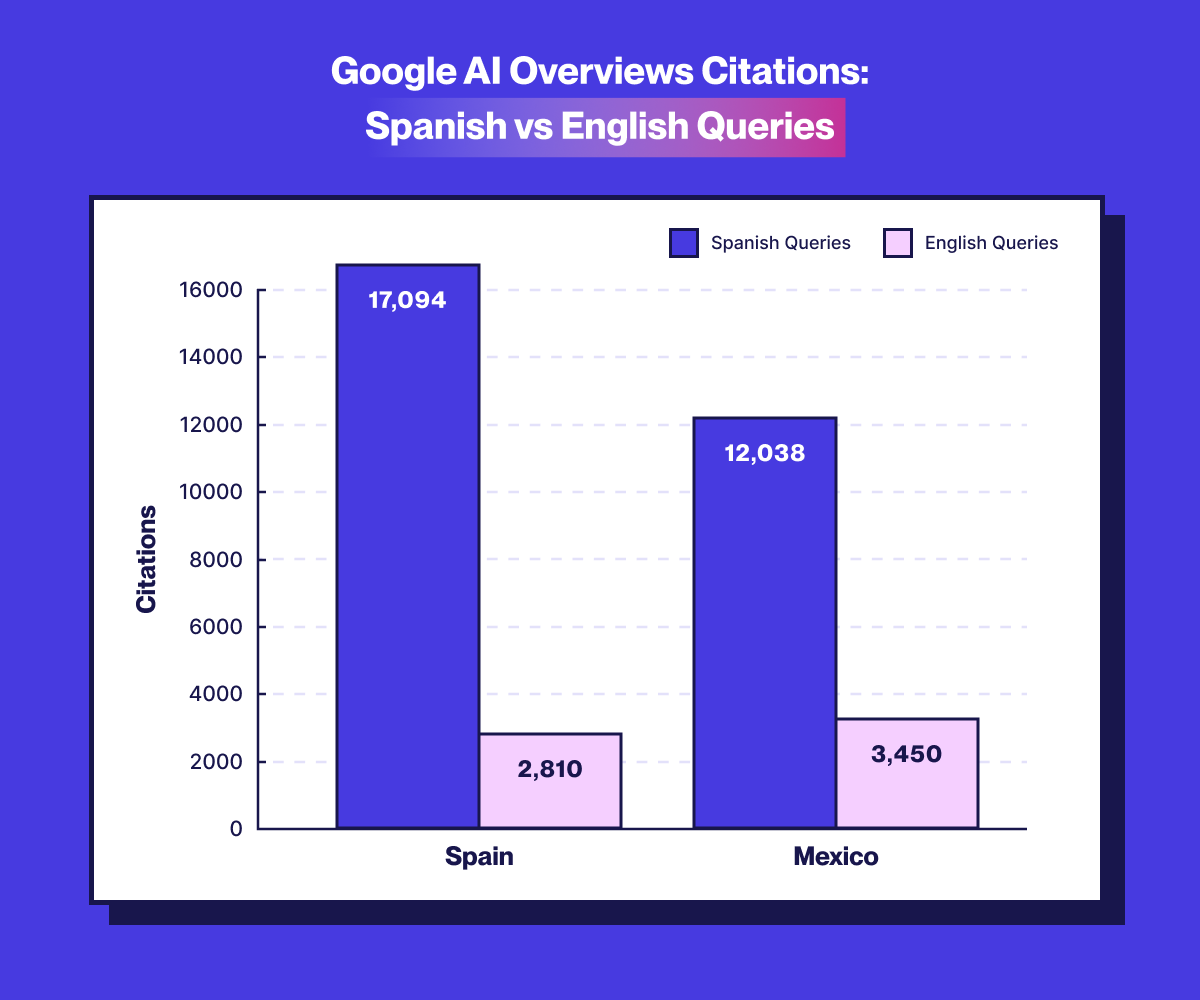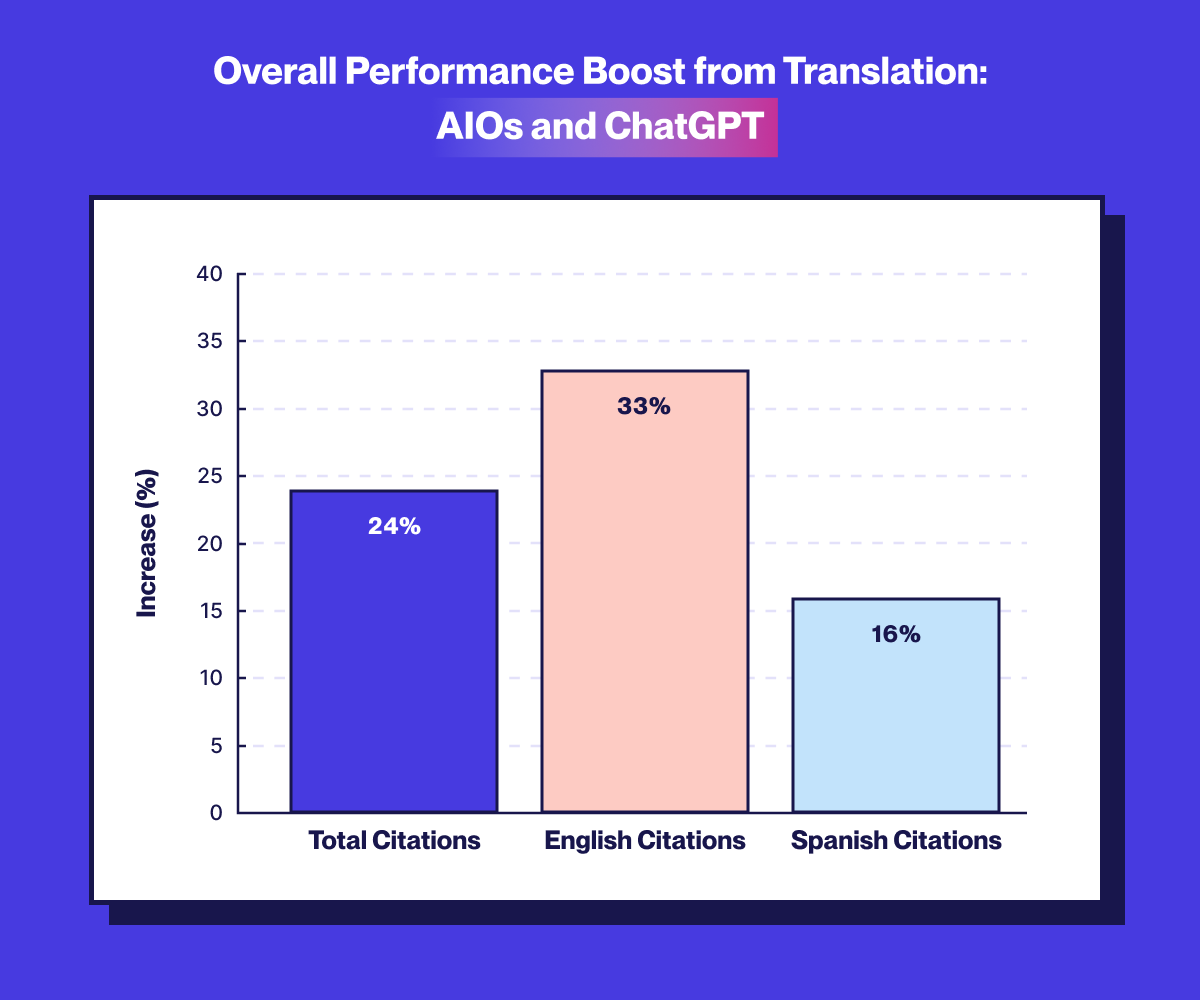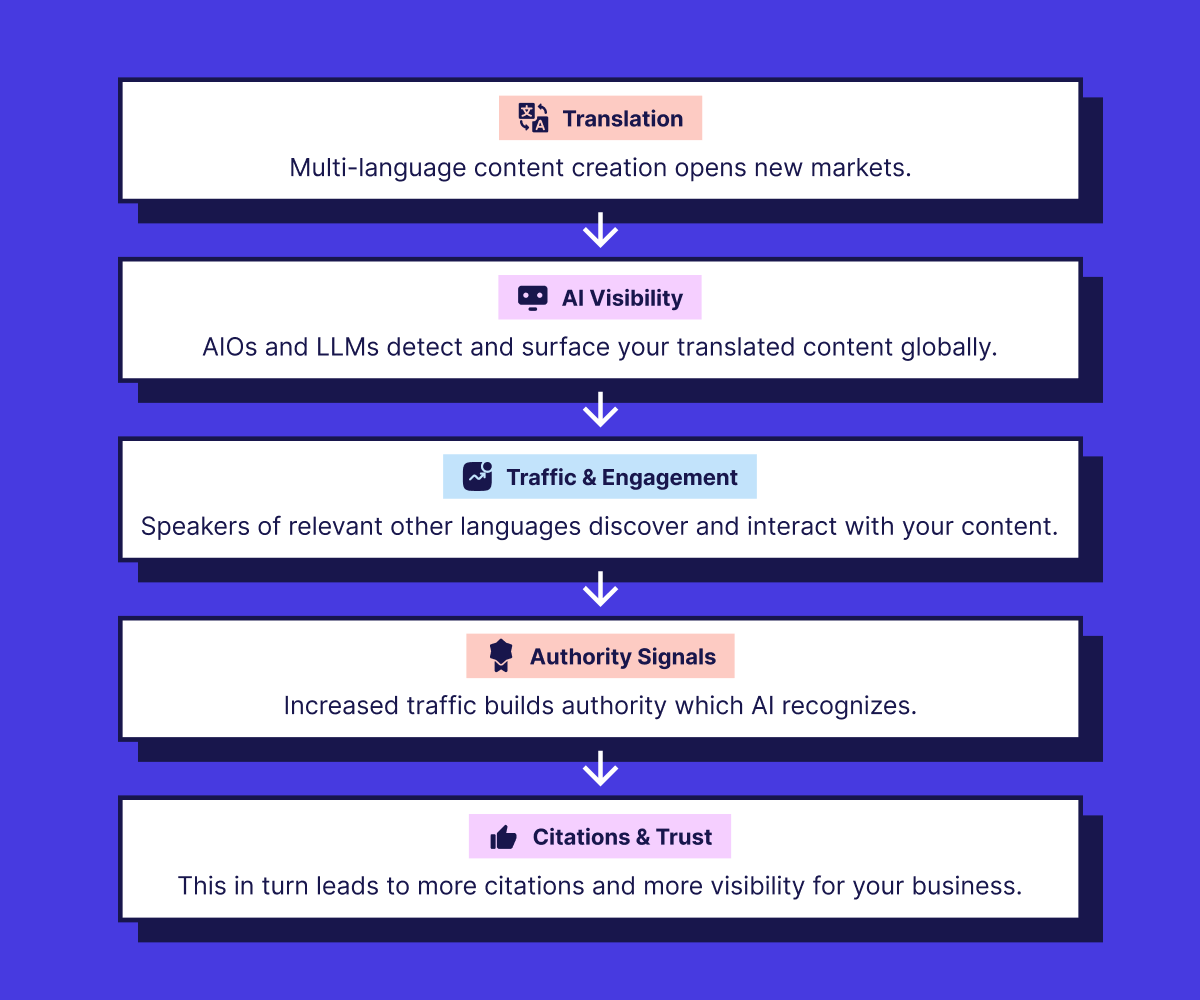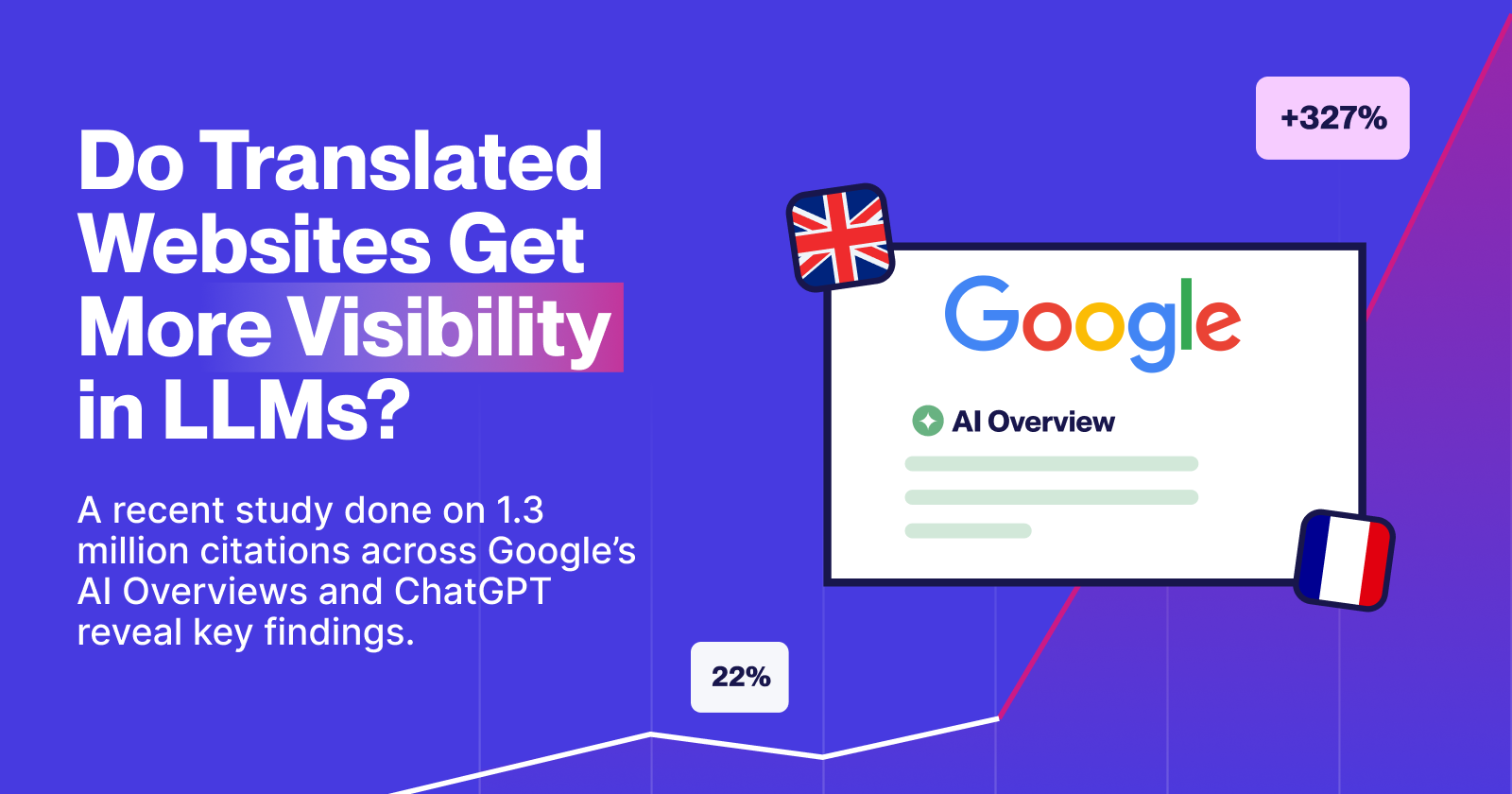This post was sponsored by Weglot. The opinions expressed in this article are the sponsor’s own.
When Google’s AI Overviews launched in 2024, dozens of questions quickly surfaced among SEO professionals, one being: if AI now curates and summarizes search results, how do websites earn visibility, especially across languages?
Weglot recently conducted a data-driven study, analyzing 1.3 million citations across Google AI Overviews and ChatGPT to determine if LLMs cite content in one language, would they also cite it in others?
The result: translated websites saw up to 327% more visibility in AI Overviews than untranslated ones, a clear signal that international SEO is becoming inseparable from AI search.
Key SEO Takeaways
What’s more, websites with another language available were also more likely to be cited in AI Overviews, regardless of the language the search was made.
The Changing Nature of Search
This shift is redefining the rules of visibility. AI Overviews and large language models (LLMs) now mediate how information is discovered. Instead of ranking pages, they “cite” sources in generated responses.
But with that shift comes a new risk: if your website isn’t available in the user’s search language, does AI simply overlook it, or worse, send users to Google Translate’s proxy page instead?
The risk with Google’s Translate proxy is that while it does the translation work for you, you have no control over the translations of your content. Worse still, you don’t get any of the traffic benefits, as users are not directed to your site.
The Study
Here’s how the research worked. To understand how translation affects AI visibility, Weglot focused the research on Spanish-language websites across two markets: Spain and Mexico.
The study was then split into two phases. Phase one focused on websites that weren’t translated, and therefore only displayed the language intended for their market, in this case, Spanish.
In that phase, Weglot looked at 153 websites without English translations: 98 from Spain and 55 from Mexico. Weglot deliberately selected high-traffic sites because they offered no English versions.
Phase two involved a comparison group of 83 Spanish and Mexican sites with versions in both Spanish and English. This allowed Weglot to directly compare the performance of translated versus untranslated content.
In total, this generated 22,854 queries in phase one and 12,138 in phase two. The methodology converted the top 50 non-branded keywords of each site into queries that users would likely search, and then these were translated between the Spanish and English versions.
In total, 1.3 million citations were analyzed.
The Key Results
Untranslated Sites Have Very Low AI Search Visibility
The findings show that untranslated websites experience a substantial drop in visibility for searches conducted in non-available languages, despite maintaining strong visibility in the current available language.
Diving deeper into this, untranslated sites essentially lose massive visibility. From the study, even when these Spanish websites performed well in Spanish searches, the sites virtually disappeared in English searches.
Looking at this data further within Google AI Overviews:
- The sample size of 98 untranslated sites from Spain had 17,094 citations for Spanish queries vs 2,810 citations for the equivalent search in English, a 431% gap in visibility.
- Taking a look at untranslated sites in Mexico, the study identified a similar pattern. 12,038 citations for Spanish queries vs 3,450 citations for English, showing 213% fewer citations when searching English.
Even ChatGPT, though slightly more balanced, still favored translated sites, with Spanish sites receiving 3.5% fewer citations in English and 4.9% fewer with Mexican sites.
-
 Image created by Weglot, November 2025
Image created by Weglot, November 2025
Translated Sites Have 327% More AI Search Visibility
But what happens when you do translate your site?
Bringing in the comparison group of Spanish websites that also have an English version, we can see that translated sites dramatically close the visibility gap and that having a second language transformed visibility within Google AI Overviews.
Google AI Overviews:
- Translated sites in Spain saw 10,046 citations vs 8,048 in English, showcasing only a 22% gap.
- Translated sites in Mexico showed 5,527 citations for Spanish queries and 3,325 citations for English, and a difference of 59%.
Overall, translated sites achieved 327% more visibility than untranslated ones and earned 24% more total citations per query.
When looking at ChatGPT, the bias almost vanished. Translated sites saw near-equal citations in both languages.
-
 Image created by Weglot, November 2025
Image created by Weglot, November 2025
Next Steps: Translate Your Site To Boost Global Visibility In AI SERPs
Translation does more than boost visibility, it multiplies it.
Not only does having multiple languages across your site ensure your site gets picked up for searches in multiple languages, but it also adds to the overall visibility of your site as a whole.
The study found that translated sites perform better across all metrics. The data shows that translated sites received 24% more citations per prompt than untranslated sites.
Looking at this by language, translation resulted in a 33% increase in English citations and a 16% increase in Spanish citations per query.
Weglot’s findings indicate that translation acts as a signal of authority and reliability for AIOs and ChatGPT, boosting citation performance across all languages, not only the ones content is translated.
-
 Image created by Weglot, November 2025
Image created by Weglot, November 2025
AI Search Rewards Translated Content as a Visibility Signal
Traditional international SEO has long focused on hreflang tags and localized keywords. But in the age of AI search, translation itself becomes a visibility signal:
- Language alignment: AI engines prioritize content matching the query’s language.
- Authority building: Translated content attracts engagement across markets, improving perceived reliability.
- Traffic control: Proper translations prevent Google Translate proxies from intercepting clicks.
- Semantic reach: Multilingual content broadens your surface area for AI training and citation.
Put simply: If your content isn’t in the language of the question, it’s unlikely it will be in the answer either.
The Business Impact
The consequences aren’t theoretical. One case in Weglot’s dataset, a major Spanish book retailer selling English-language titles worldwide without an English version of its site, shows the impact.
When English speakers searched for relevant books:
- The site appeared 64% less often in Google AI Overviews and ChatGPT.
- In 36% of the cases where it did appear, the link pointed to Google Translate’s proxy, not the retailer’s own domain.
Despite offering exactly what English users wanted, the business lost visibility, traffic, and ultimately, sales.
The Bigger Picture: AI Search Is Redefining SEO and Translation Is Now a Growth Strategy
The implications reach far beyond Spain or Mexico, or even the Spanish language.
As AI search evolves, the SEO playbook is expanding. Ranking isn’t just about “position one” anymore; it’s about being cited, summarized, and surfaced by machines trained on multilingual web content.
Weglot’s findings point to a future where translation is both an SEO and an AI strategy and not a localization afterthought.
With Google AIOs now live in multiple languages and ChatGPT integrating real-time web data, multilingual visibility has become an equity issue: sites optimized for one language risk being invisible in another.
-
 Image created by Weglot, November 2025
Image created by Weglot, November 2025
Final Takeaway: Untranslated Sites Are Invisible in AI Search
The evidence is clear: Untranslated = unseen. Website translation is high up there for AIO visibility.
As AI continues to shape how search engines understand relevance, translation isn’t just about accessibility; it’s how your brand gets recognized by algorithms and audiences alike.
For the easiest way to translate a website, start your free trial now!
Plus, enjoy a 15% discount for 12 months on public plans by using the promo code SEARCH15 on a paid plan purchase.
Image Credits
Featured Image: Image by Weglot. Used with permission.
In-Post Images: Image by Weglot. Used with permission.


